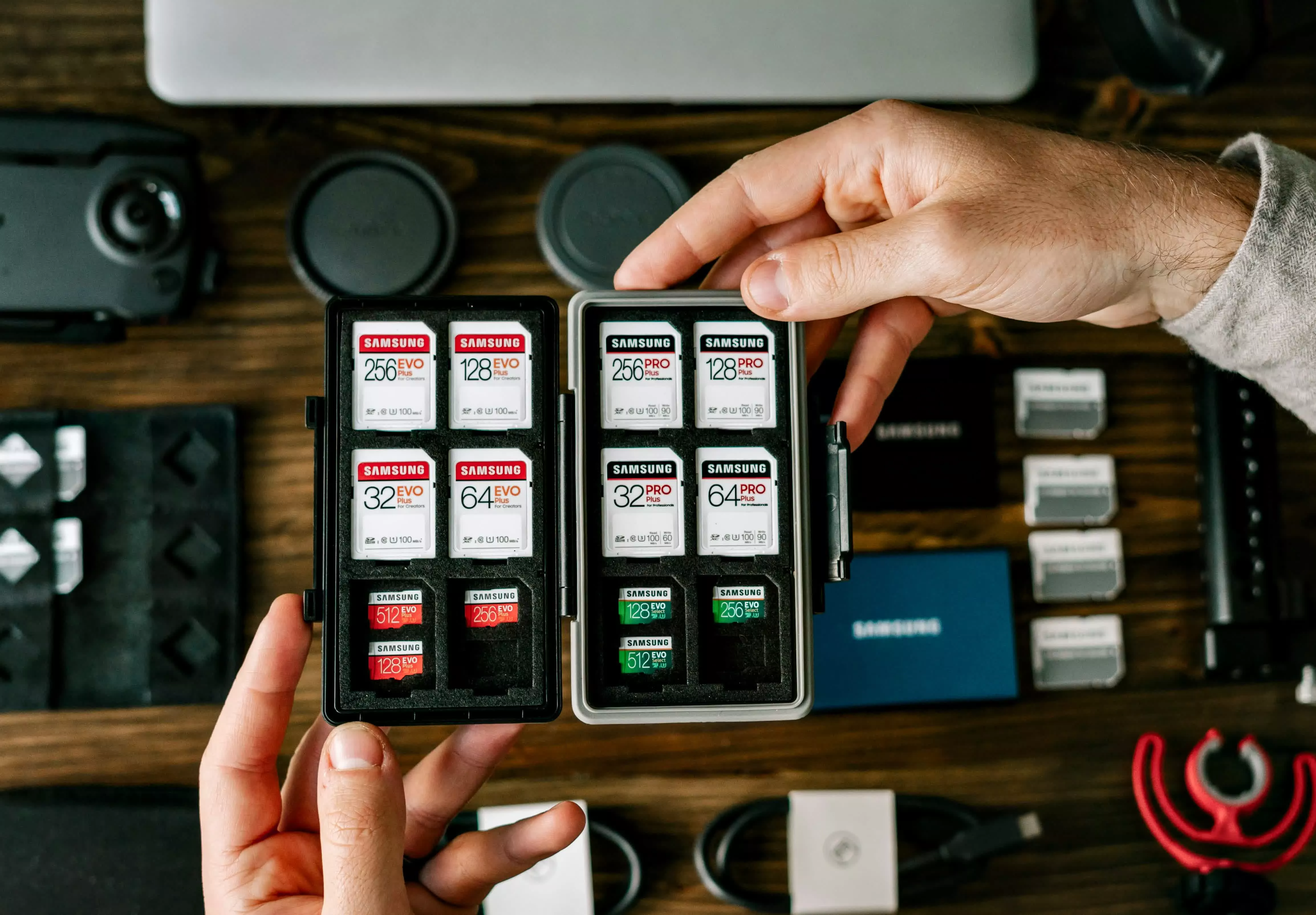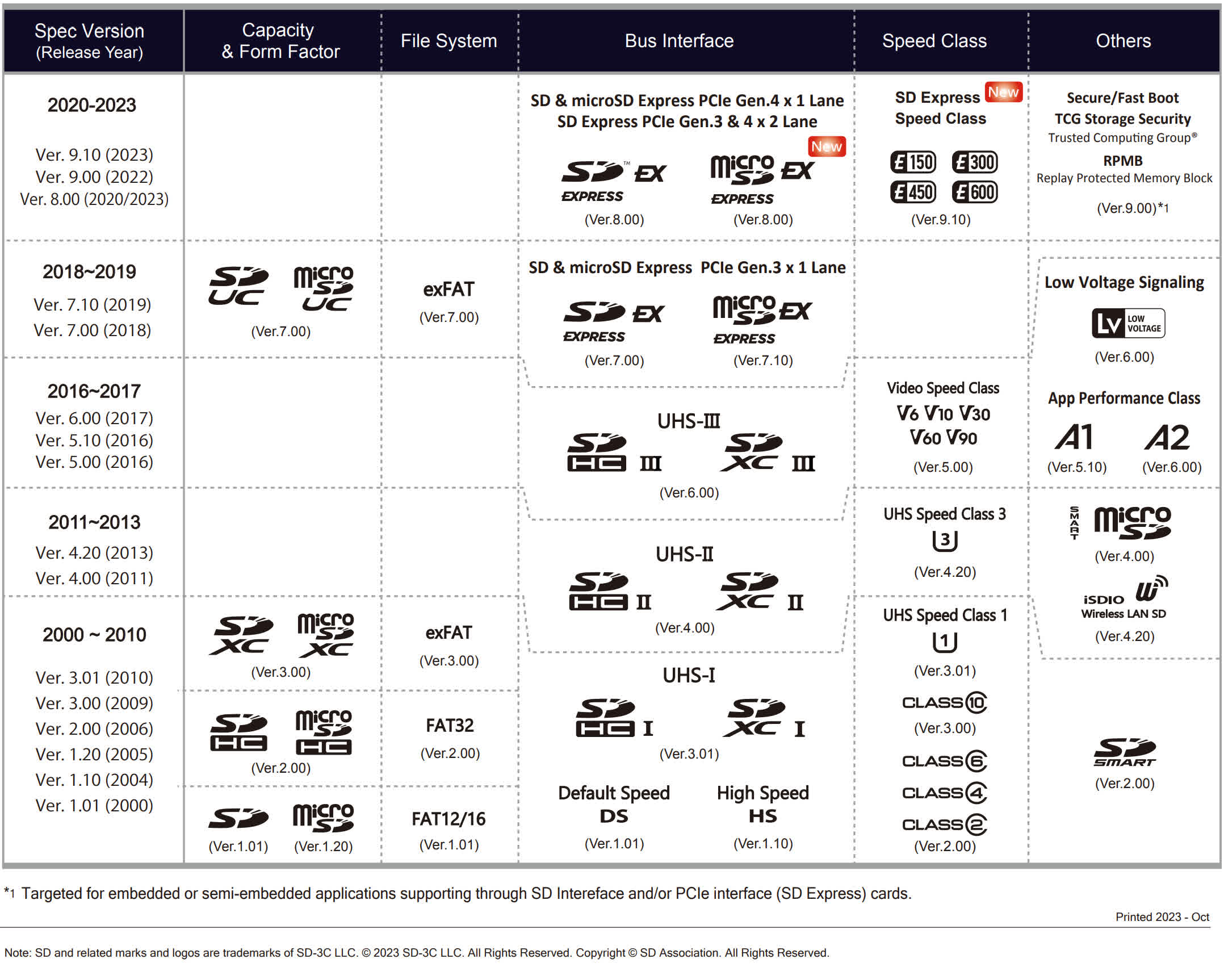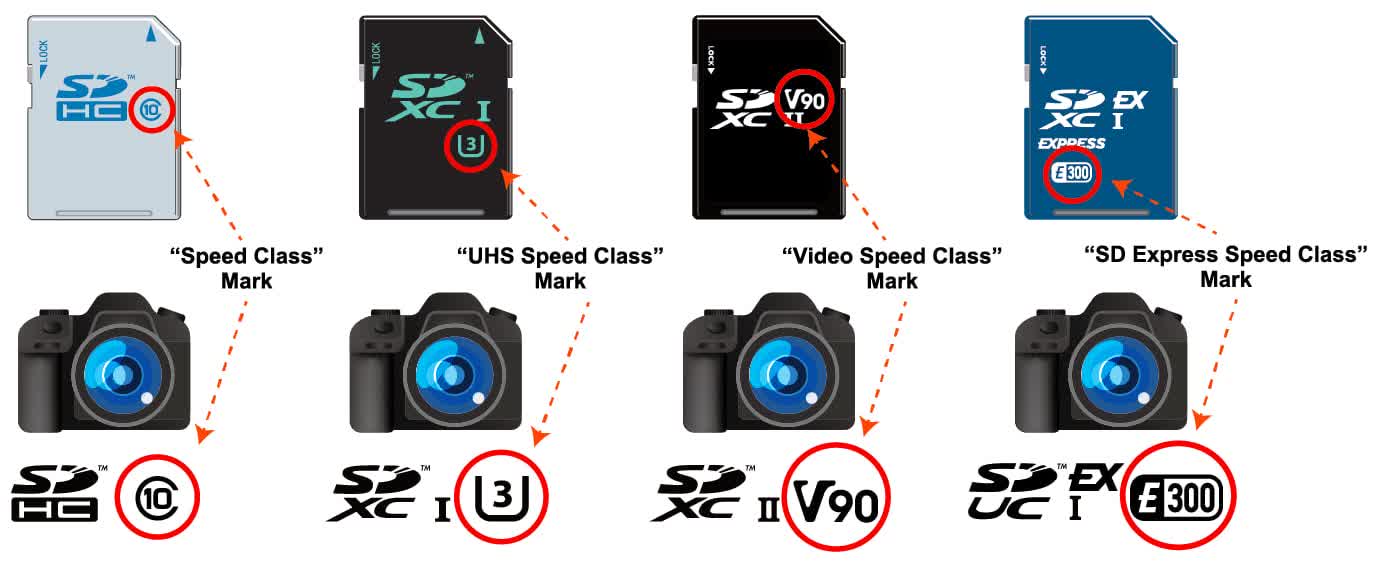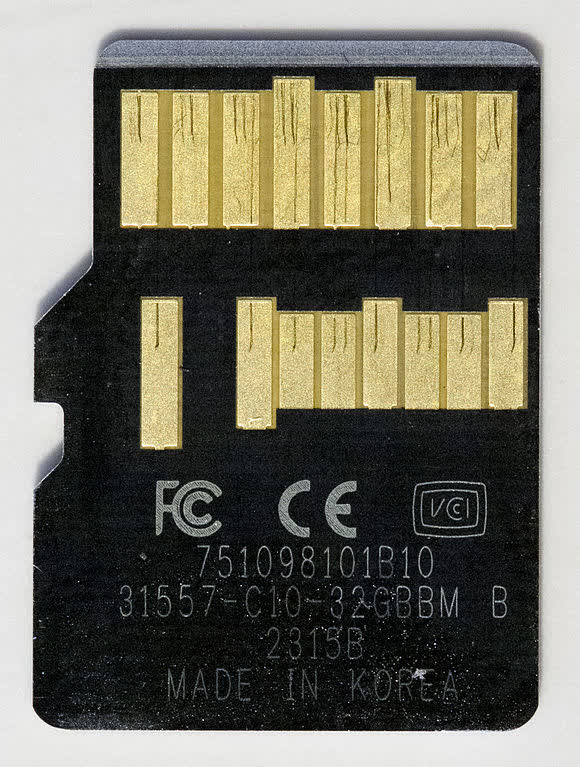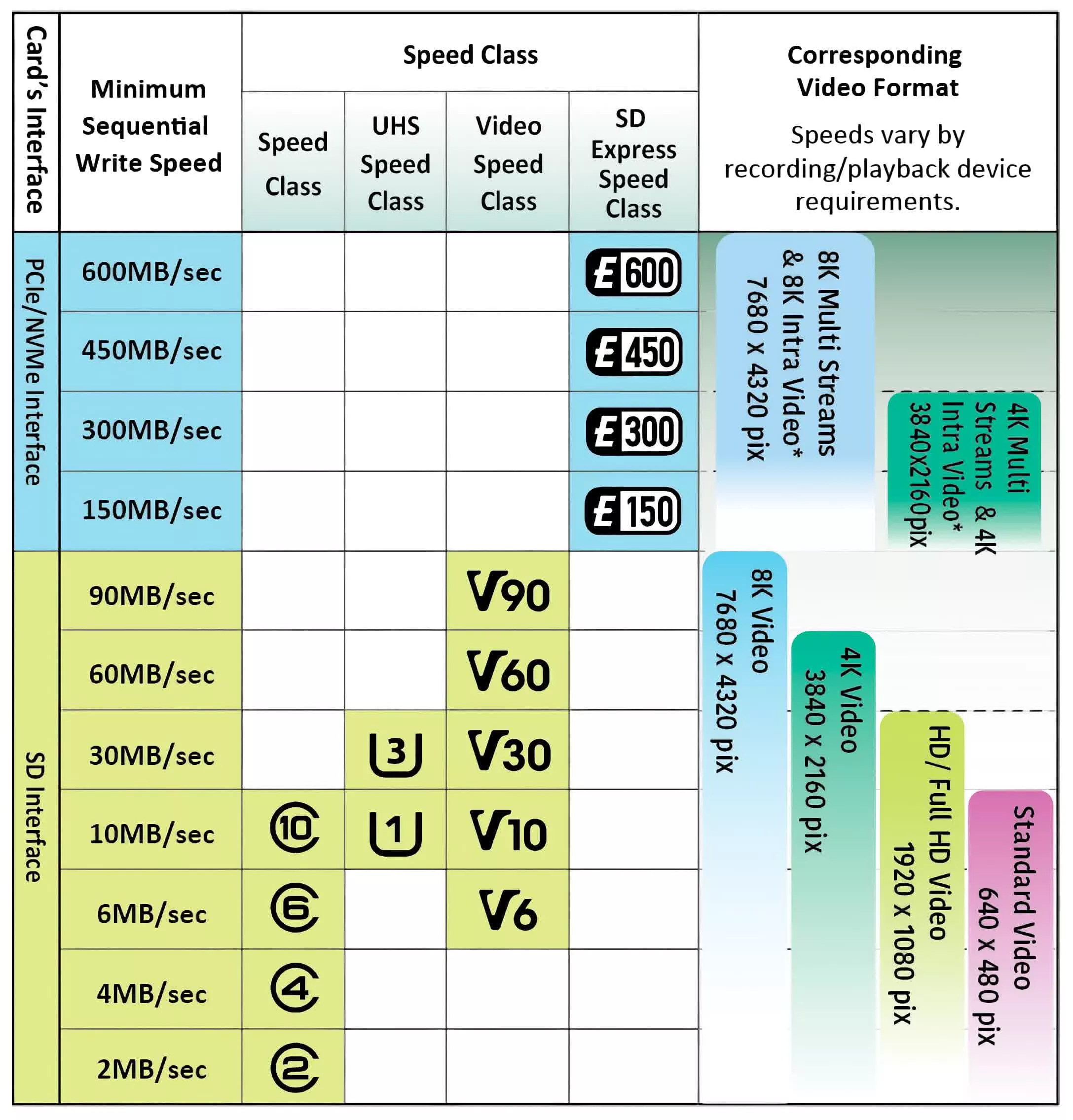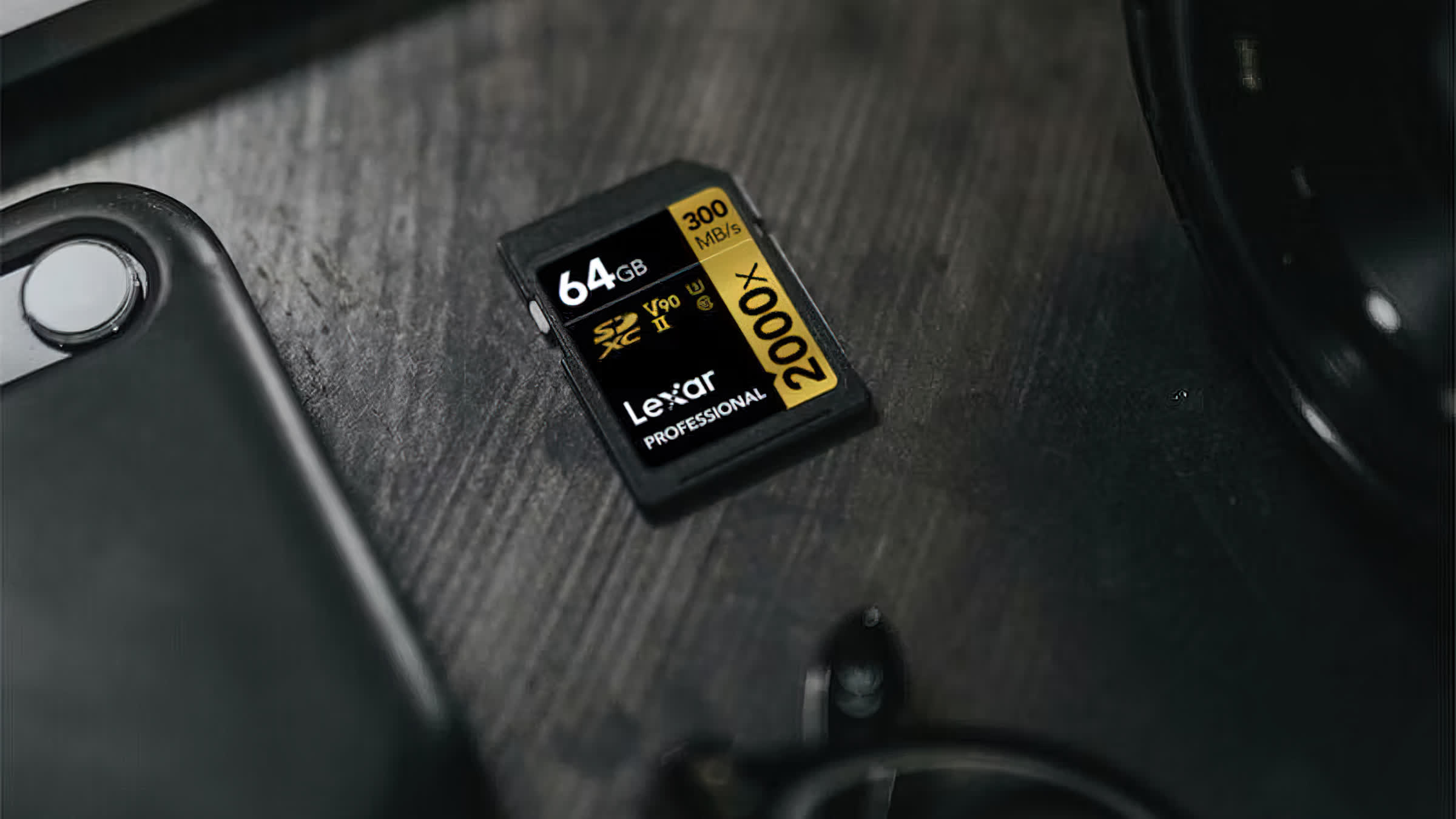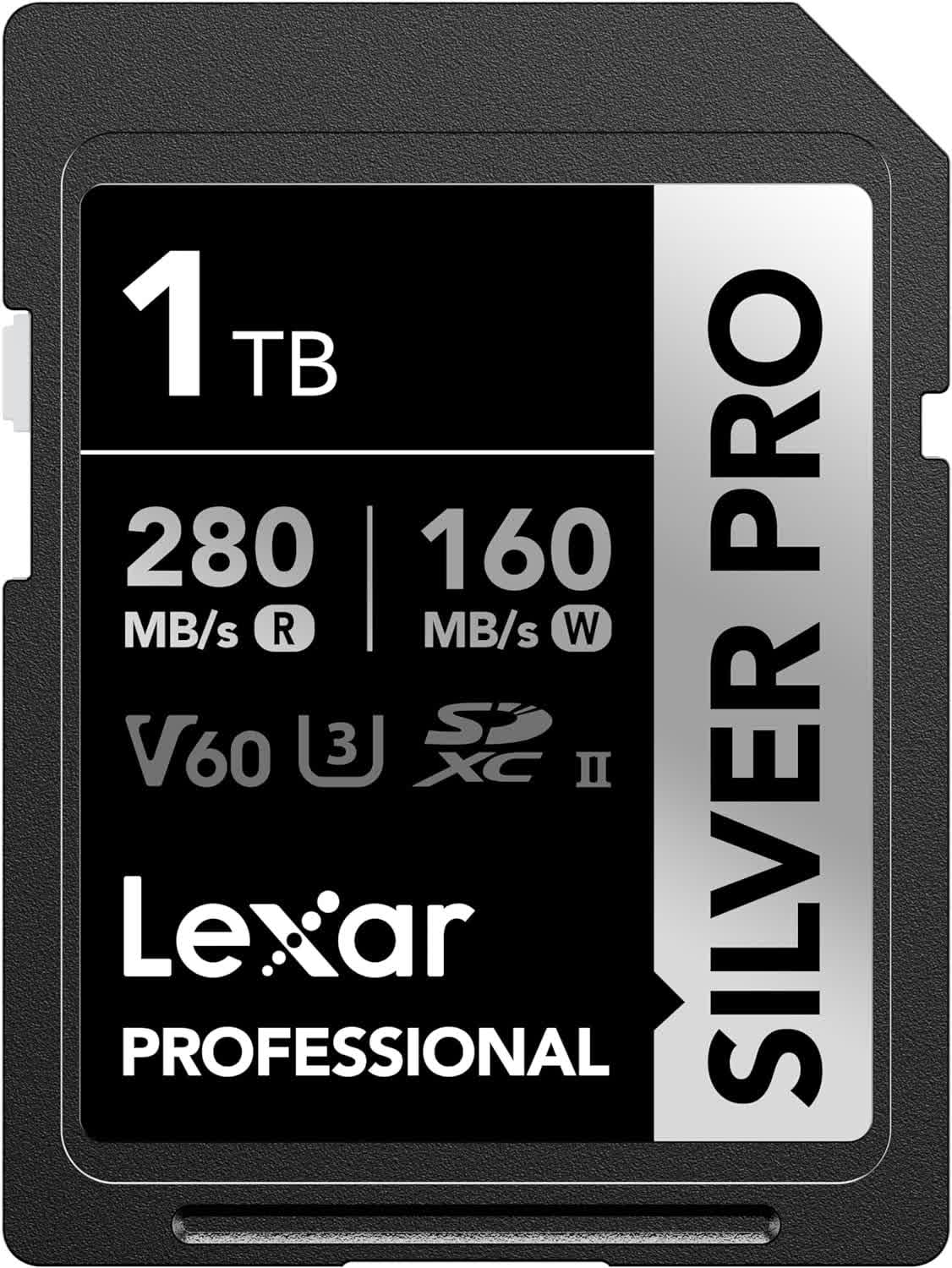Portable flash memory has never been more versatile, and you will be pleasantly surprised by the widespread availability and affordability of high-speed, large-capacity microSD and SD cards these days. Flash storage is not just limited to expanding the memory of your phone or tablet. From drone footage to high-resolution professional cameras, and continuous recording needs of dash cams and surveillance systems, microSD cards have become the go-to choice for a variety of storage needs.
Although microSD cards are often favored for their compact size, full-sized SD cards continue to hold their ground, especially among professional photographers who demand the utmost reliability and performance.
In this guide, we explain all the different card classes and specs, helping you understand what will work best for you. Whether you're an action camera enthusiast, a gaming aficionado seeking extra storage for your console, or a tech enthusiast embarking on your next project with a Raspberry Pi, this guide will provide the insights you need to make an informed choice.
TL;DR: The Highlights
- Best Value microSD
- Best Value SD card
- Performance microSD
(for Phones / Tablets) - Performance microSD
(for video recording) - Performance SD card
- High Capacity microSD
- High Capacity SD card
The Basics: Size & Storage
All SD cards (short for Secure Digital), regardless of their size, use one or two small NAND flash memory chips – similar to those found in USB memory sticks and SSDs – and a tiny processor to manage the flow of data and instructions.
There are 3 standards for the dimensions, and they are incompatible with each other. In other words, a miniSD card reader won't work with microSD cards (unless you use an adapter):
- Standard SD cards: 1.26 x 0.94 x 0.083 to 0.055 inches (32 x 24 x 2.1-1.4 mm)
- miniSD cards: 0.85 x 0.79 x 0.055 inches (21.5 x 20 x 1.4 mm)
- microSD cards: 0.56 x 0.43 x 0.039 inches (15 x 11 x 1 mm)
Standard SD cards all come with a small locking toggle, that enables/disables the ability to write or delete data on the card; however, mini and microSD cards don't have this.
There's also a further 5 categories within the size classes, that indicate the connection system and data capacity of the card:
- SD or SDSC (Secure Digital Standard Capacity): maximum storage of 2 GB
- SDHC (Secure Digital High Capacity): More than 2 to 32 GB of storage
- SDXC (Secure Digital Extended Capacity): More than 32 GB to 2 TB of storage
- SDUC (Secure Digital Ultra Capacity): More than 2 TB to 128 TB of storage
- SDIO (Secure Digital Input Output): Contain more than just storage. These cards sport an extra device that provides additional functions, such as a Bluetooth or GPS receiver.
SDSC is restricted to FAT12, FAT16, and FAT16B. SDHC is nearly always FAT32 and the XC/HC versions use exFAT. The exFAT file format was specifically designed for NAND flash devices and is likely to remain the standard for many more years.
SDSC, SDHC, and SDXC cards are supported in a wide range of devices, such as laptops, smartphones, drones, and digital cameras. The need for increased storage continually grows, thanks to bigger games, more complex apps, and cameras sporting ever higher resolutions – but there will always be an SD card for everyone's needs and budget.
SDUC is still rather new, so it will be some time before we see produces routinely supporting it; 128 TB of storage should be enough for the majority of users for years to come.
SD Specification Evolution
The table above, from the SD Association, shows how the Secure Digital technology has changed over the past two decades and highlights just how quickly they grew in storage capacity. You'll probably have also noticed that there's even more to SD cards than just capacity: time to talk about performance.
Performance: Speed Classes
All SD cards use the little brass contacts at the end of the package to receive and send data. The interface between the card and the reading device has evolved with each specification revision – in some cases, the updated system just runs faster, but in others, the SD card has extra contacts to provide more channels for the data.
These differences have been classified in four speed classes, each organized by the peak bus throughput – or the measure of the max amount of bytes per second that can be transferred between the SD card and host device.
Not all NAND flash chips are the same, so the speed classes also indicate the minimum sequential write rate – the slowest speed at which data can be put onto the memory chip in a structured, rather than a random, way.
With so many speed classes to get your head around, it can be tricky to figure out what rating you really need. In the table below, we can see how they roughly compare.
The SD Association came up with the speed classification systems to help differentiate what cards are best suited to what purposes. The simple Class number is the most immediate indicator to the speed of an SD card, with Class 2 (2 MB/s) cards being toward the bottom of the spectrum and are best geared towards less demanding tasks, such as recording standard definition video.
At the other end of the scale, Class 10 (10 MB/s) cards are capable of recording or playing up to 4K video, although not at a very high frame rate.
Some SDHC and SDXC cards will also support Ultra High Speed (UHS) classification, which offers improved data transfer rates. There are 3 versions of this system and the first versions to appear (UHS-I and UHS-II) offer two speed modes: U1 and U3. The former is essentially the same as C10, but U3 provides three times greater throughput at 30 MB/s – good enough for 4K videos at a high frame rates.
UHS-I cards have just one set of contacts for sending and receive information, so when running at the higher speed, the bus will run in what is called Half Duplex mode: the SD card will only be able to receive or send data, at any one time. The later versions of UHS sport extra contacts, which permits Full Duplex (send and receive together), both to occur at the same time; however, in UHS-II this results in the bus being forced to run at the slower speed. UHS-III and SD Express don't have this problem, and always run Full Duplex.
With SD Specification 5.0, the association provided another rating system: Video Speed. This classification is better at conveying its information, with Video Class 10 (V10), for example, applying to cards that have a minimum sequential write speed of 10 MB/s, through to Video Class 90 (V90 = 90 MB/s). At that speed, the playback and recording of 8K video at 60 to 120 fps becomes feasible.
Later on, the SD Association announced the SD Express specification – this version uses up to 2 PCI Express lanes to provide a huge increase in throughput.
SD Card Bus Speeds
| Bus system | Peak throughput (MB/s) | PCI Express type | SD card supported | |
| Default speed (DS) | 12.5 | Not used | All | |
| High Speed (HS) | 25 | Not used | All | |
| Ultra High Speed I (UHS-I) | 50 | 104 | Not used | SDHC, SDXC, SDUC |
| Ultra High Speed II (UHS-II) | 156 | 312 | Not used | SDHC, SDXC, SDUC |
| Ultra High Speed III (UHS-III) | 312 | 624 | Not used | SDHC, SDXC, SDUC |
| SD Express | 985 | PCIe 3 (x1 lane) | SDHC, SDXC, SDUC | |
| SD Express | 1970 | PCIe 4.0 (x1 lane) PCIe 3 (x2 lanes) |
SDHC, SDXC, SDUC | |
| SD Express | 3940 | PCIe 4.0 (x2 lanes) | SDHC, SDXC, SDUC | |
SD cards utilizing UHS-III or SD Express faster specs are not widely available, despite the technologies being available for several years. But this is because the performance is only unlocked if the device using the card fully supports it, and that support remains mostly absent.
| SD Express Speed Class | Minimum read/write performance (MB/s) |
| SD Express E150 | 150 |
| SD Express E300 | 300 |
| SD Express E450 | 450 |
| SD Express E600 | 600 |
Briefly shown in the very first table is yet another category rating. The use of SD cards in smartphones and tablets, where the additional NAND flash can be used as working storage, requires more than just good throughput. The ability to handle lots of random data instructions (measured in IOPs, input/output operations per second) is key to ensuring consistent system performance, and in 2015 the SD Association created two further standards: Application Class A1 and A2.
Cards rated A1 are capable good for a random read performance of 1500 IOPS and random writes of 500 IOPS, while A2 significantly increases that, although this does require very specific hardware support. Additionally, the A1/A2 rating also means that the cards offers a sustained sequential write speed equal to that of V10.
| Class | Min. Seq. Writes | Min. Random Read | Min. Random Write | Ideal Workload |
| A1 | 10 MB/s | 1500 IOPS | 500 IOPS | Editing and updating application data, not just storage |
| A2 | 10 MB/s | 4000 IOPS | 2000 IOPS | Specialized uses of the above |
All of this makes the rating system somewhat of a minefield to navigate, but generally speaking, it can be broken down into 3 simple categories: general use/value for money, best possible performance, and maximum storage capacity.
For example, the average smartphone user will need something from the first category, whereas a high-end camera or video recorder, used by a professional photographer, will want to consider something from the other two more specialized categories.
What to Buy
Although this guide should have equipped you with the information you need to pick your own SD or microSD card, we went ahead and chose models for the three categories that stood out as offering the best combination of specification and price. We're keeping this guide up-to-date throughout the year where the most notorious differences are in the capacity and value you can now get, essentially now you can buy much larger memory cards for relatively less.
Best Value microSD Cards
- Samsung Pro Plus microSD 256GB UHS-I U3 - $23 on Amazon
- Runner up: Samsung Pro Plus 512GB UHS-I U3 - $40 on Amazon
Best Value SD Card
- SanDisk Extreme Pro 256GB SDXC UHS-I V30 - $42 on Amazon
Samsung's driving force in the flash drive market is not limited to high-speed SSDs and there's a good chance that the company's memory chips are in your phone, too. Thus, it shouldn't come as a surprise to see a Samsung-branded microSD cards listed here.
For only $23, the 256GB Samsung Pro Plus (UHS-1, U3) offers up to 180 MB/s reads and 130 MB/s writes, and it ships with an SD card adapter.
You can also choose a card with less capacity. The same Samsung microSD card with 128GB is down to $13. There are plenty of alternatives, but you should be aware that many are U1 cards; they advertise the same read speeds as the Samsung cards, but they have much slower writes of only 20-30 MB/s.
Best High Performance microSD Cards
- Smartphone/Tablet use: SanDisk Extreme 256GB UHS-I U3/V30 A2 - $30 on Amazon
- Video recording: Lexar Professional 1066x 256GB UHS-I U3/V30 A2 - $23 on Amazon
- Runner up: ProGrade Digital 256GB UHS-II U3/V60 - $109 on Amazon
Best High Performance SD Cards
- Lexar Professional 2000x 256GB SDXC UHS-II V90, U3 - $225 on Amazon
- Delkin 128GB Power microSDXC UHS-II V90, U3 - $80 on Amazon
- Sony Tough-G series 128GB SDXC UHS-II V90, U3 - $173 on Amazon
For a wide majority of users, the best value cards will be fast enough and will offer plenty of storage. However, for more specialized use, make sure you are buying a top performing card that's right for the task, and that your device can take full advantage of the card's rating.
If you want fast storage for a smartphone or tablet, you should be more concerned about fast random access and reading small files simultaneously. The SanDisk Extreme 256 GB is rated for faster A2 application performance (4000 read and 2000 write IOPS) and lists 200 MB/s sequential reads with 140 MB/s write speeds.
For movie recording on drones and video equipment, you want a card with the highest rating (UHS-II V60). The ProGrade Digital has been rated for 4K video recording and is relatively affordable at $109 for 256 GB.
UHS-II rated microSD cards are generally more scarce, but can be found in various brands if you look for them (the card reader must be UHS-II rated to take advantage of the faster memory).
If you want the best performance on full size SD, top performing SD cards such as Lexar Pro 2000x and the Sony Tough-G can reach 300 MB/s reads and better sustained writes in the larger form factor.
Best High Capacity microSD Card
- More storage: Lexar Play 1 TB UHS-I U3/V30 A2 - $73 on Amazon
- Good Alternative: Lexar Pro 1066x 256GB UHS-I U3/V30 A2 - $45 on Amazon
Best High Capacity SD Card
- More storage: SanDisk Extreme Pro 1TB SDXC UHS-I U3/V30 - $140 on Amazon
- Faster Alternative: Lexar Silver Pro 1TB SDXC UHS-II U3/V60 - $269 on Amazon
If you simply need the max amount of storage you can get, 1TB cards are more affordable than they were before. You won't find anything bigger for the price than Lexar's Play 1 TB (UHS-1, U3/V30) on the microSD side. It might seem expensive at $73, but if you are routinely shooting 4K video, then you'll welcome the extra capacity.
When it comes to the SD format and needing the highest capacity and storage, two top options emerge: the SanDisk 1TB Extreme (UHS-1, U3/V30, A2) and the faster Lexar Silver Pro (UHS-II, U3/V60). Both offer an excellent balance between performance and capacity, making them ideal choices if you want the capacity and are willing to pay a premium for it.
